Why Vincent van Gogh Would Have Loved to Paint the Nature and Churches on My Island
While living in a small island village during springtime, I was inspired by nature, art, and returning birds
After many decades of travel, I have lost count of the cities I have lived in. But they were large cities, often European capitals. I effortlessly find my way in the streets of London, the cobblestone alleys in the historic first district of Vienna, and the Old Town of Stockholm.
But these past months, I have been living in a village. It is part of a cluster of five hamlets on the west side of a Dutch island with the hard-to-pronounce name Schouwen-Duiveland.
I am one of the four thousand inhabitants in this area, a number that swells in springtime and summer when Dutch, German, and Belgian tourists invade the island. Suddenly, cyclists with multicolored helmets change the landscape, and the only set of traffic lights in these five villages is treated with the respect it deserves.
A gentle pace of life
Life creeps more slowly in my village than on an average day of hectic city life I am used to. Walking to the bakery, I see an older man sitting on one of the green benches the municipality has placed for men like him. He is the gray, stiff-walking kind, wearing an old-fashioned, faded raincoat.
We usually greet each other, but I continue walking; I’m still too conditioned to live in a big city to stop and take time for a man who is never in a hurry.
I admire him for setting the right priorities at his age: sitting on the green bench under the chestnut tree and watching time and the world pass by leisurely. He is not checking emails on his iPhone or trying to catch a taxi as if he is in Piccadilly, the Ringstrasse, or Kungsträdgården. He supervises a dove picking into the ground and takes his task seriously.
Bikes outnumber cars, and in the combustion-free silence, I enjoy the birds singing in the forest behind the castle as I walk on. Since I settled here temporarily, I have enhanced my ability to recognize their songs and sounds.
A marvel of evolution
I hear a great spotted woodpecker, a marvel of evolution with two toes facing forward and two to the back for better tree climbing. It uses stiff tail feathers as a prop against the trunk, helped by solid tail bones. Like all woodpeckers, its skeletal adaptations absorb the hammering and prevent a permanent migraine.
This bird is a marvel of evolution. Nature’s design is perfected with a unique set of narrow nostrils, protecting the woodpecker like a P95-grade mask against the flying debris the bird creates while pecking wood.
While I admire historical and cultural sites in cities, I feel closer to nature in this village. Each season has beauty to admire, but springtime is a favorite when trees and flowers bloom and bright colors replace winter’s brown and grey shades.
Magnolias take center stage in this show of colors, casting a spell of beauty even in some dull gardens I usually ignore on my daily walks. I pass mainly light pink versions.
Several years ago, I planted one in my small garden, and I was delighted to see its first flowers this morning. Unlike the ones I pass in the village, the one in my small tree is still tightly wrapped, like a gift waiting to reveal its beauty. It has already given away the secret of its color: a deep magenta. I can’t wait to see it mature further.
I continue my route towards the bakery, following the uncountable footsteps I have left in its streets and alleys in the many decades I have visited this picturesque village. But a walk is always different, so there are little discoveries to be made. And living here now semi-permanently like a homesick nomad, I see so much more.
There is beauty in architecture, like this house built in traditional Dutch architecture. It could easily grace a Vermeer, although I’m sure the master would leave out the modernity of the neighboring house.
There is beauty in light. I must have passed this church window countless times, but never at the right time and day that the sun illuminates it from the back. This faded window at the back of the church suddenly transforms into a colorful gem, only to vanish minutes later when it returns to its obscure corner, hidden from view from the traffic that passes the church on the other side.
There is beauty in composition. I stepped back from the church and searched for the right angle. I believe I found it in this tableau of the church that blocks out the direct sun, which still illuminates the clouds. I used it as the opening photo in this article.
The tree is still in its winter nakedness and lightly balances the massive form of the church. The stone wall, in combination with the houses, reminds the viewer of the typical Zeeland structure of a ring village centered around the church.
Vincent van Gogh
There is the beauty of associations, like when I feel connected to how Vincent van Gogh painted the churches of Nuenen and Auvers-sur-Oise in a way that he bridged his early and later works. Vincent would have loved this village of working families, farmers, knotted willows, and sunflowers.
The association made me look up his depiction of the famous Church at Auvers, which he painted in June 1890. It was the summer when creativity, productivity, and tragedy climaxed; about a month later, he ended his tormented brilliance.
In one of the final paragraphs of my latest article, I wrote, “The tragedy of artists is that they will never know how we will remember them. Vincent van Gogh would be pleased to know that billions of people instantly recognize his name and works.” The Church at Auvers is an example. I’m sure many of you will immediately remember seeing it before in a publication, or you may have noticed this painting in the Musée d’Orsay. For some others, visiting Paris may still be on their bucket list.
I’m not alone in seeing a connection between the Auvers and the Nuenen churches of Van Gogh; I’m in the excellent company of the painter himself, who wrote in one of his last letters to his sister Wilhelmina on June 5, 1890:
“I have a larger picture of the village church — an effect in which the building appears to be violet-hued against a sky of simple deep blue color, pure cobalt; the stained-glass windows appear as ultramarine blotches, the roof is violet and partly orange. In the foreground are some green plants in bloom and sand with the pink sunshine flow. And once again, it is nearly the same thing as the studies I did in Nuenen of the old tower and the cemetery, but it is probably that now the color is more expressive and more sumptuous.”
I wonder how Vincent, a pastor’s son, felt about churches. Would he see them mainly as secret places or admire the artistic skills of the architects? Would he feel strongly about a church spiritually? Would he be reminded of the sense of community and belonging, which might also remind him of his individuality and his difficulties bonding with others? In his Nuenen church painting, a congregation leaves the Reformed Church, capturing a sense of community, faith, and daily life.
Fading into history
I feel sadness for not being able to ask him; unlike Velázquez or Rembrandt, whose characters faded into history, Vincent feels closer. So much is touchable from the history of his day: the buildings he painted, the train routes he traveled, and the dawn of modernity he experienced. I was born only 75 years after his death.
Artists often remind me that death is definitive, irreversible, and thus hard to accept. I wish I could ask him these questions and invite him to paint the church of Burgh in early springtime, with the sun piercing through the stained glass window.
If I dared, I would ask Vincent if his interest in churches and graveyards may also have been triggered by his brother’s burial in a cemetery near Nuenen in Zundert Groot.
Vincent could tell me about Millet, who remained an inspiration throughout his career. The way Van Gogh’s farmers bow slightly forward when working in the fields seems inspired by his lesser-known idol. Perhaps Millet’s “The Church at Greville” motivated him to follow the master as he had often done in other paintings.
I continue my walk to the other side of the church, where the bakery is. I admire the simple architecture in this village, notice small details of local building traditions, and realize how well the older houses blend into the nearby nature.
Finding beauty in the normality of every day
Vincent loved the ordinary, and his ability to find beauty in the normality of every day has inspired me since high school. It has influenced my photography and writing and sometimes led to surprised reactions when I focus on a beautiful detail while the mood of a jolly group of friends isn’t set for such undertones.
This church is not the original; it was probably built in the tenth century and was once dedicated to Saint Willibrord. In this conservative protestant community, it is hard to imagine that the church was Roman Catholic until the Reformation. A new one was built in the 17th century, which burned down in 1924 due to negligence during plumbing work when a plumber left his burner on the roof during a break.
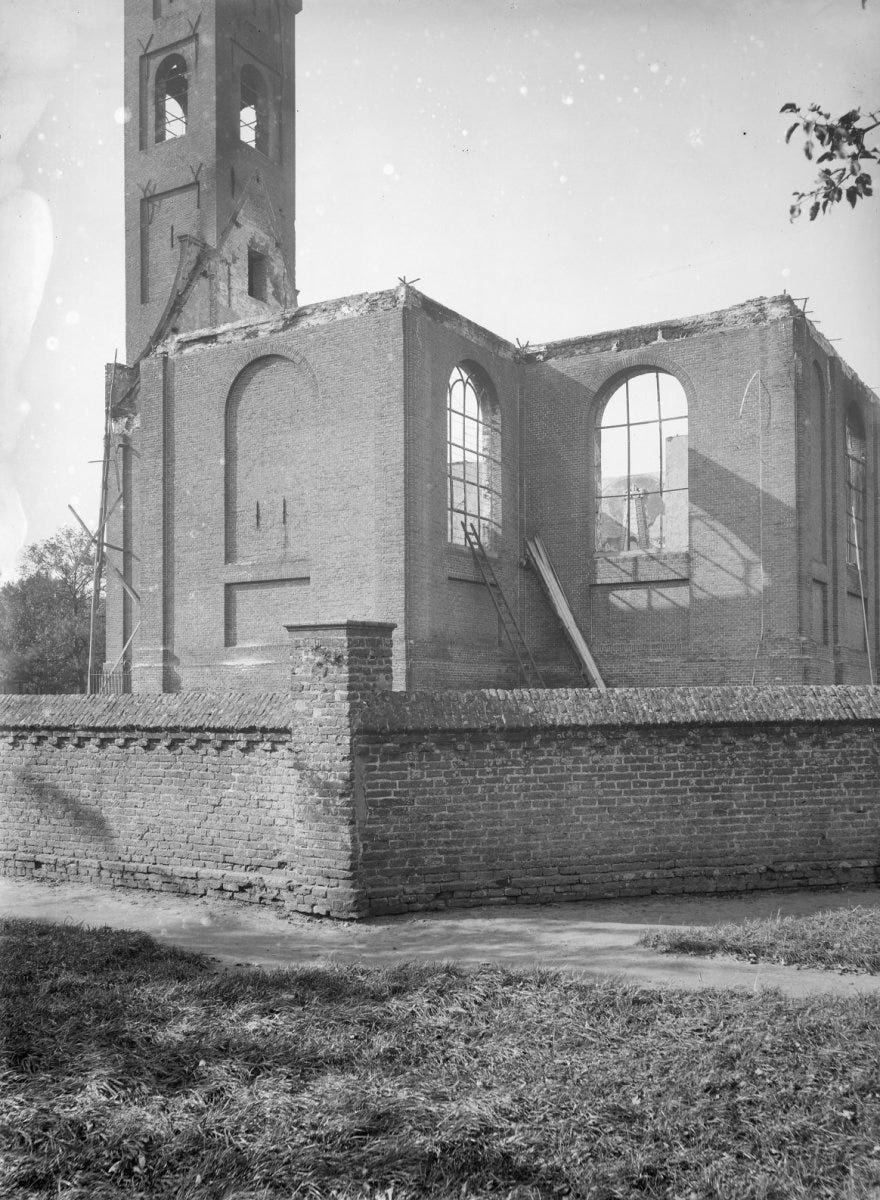
During the Second World War, the restored church’s tower was utterly destroyed on January 5, 1945, after an English bomber precision-bombed the German guard post located there. The church and tower were rebuilt shortly after the war, according to images from before 1924.
I look up to the sky, trying to imagine the sight of RAF planes attacking this quiet village. Soon after this attack, another one followed; it destroyed the house that stood at the corner of the street where I live. It was bombed to rubble in early 1945. Two years later, the house I bought was built on that spot.
Birds returning
Instead of planes, I see birds returning from the warm south. The first to arrive are those who spend the winter in southern Europe, such as the chiffchaff and the blackcap. Many of the birds that flew to Africa are still on their way. But all of them are in a hurry; unlike the slower pace trek to the south, they are now eager to catch insects to feed their young.
Climate change is disrupting their annual treks; some are arriving weeks earlier. The insect peak occurs earlier, and the birds can’t miss that opportunity because they need plenty of insects to feed their young. For instance, barn swallows arrive in mid-March nowadays, two weeks earlier than in the 1970s.
The bakery on the other side of the church is so small that only two customers can wait inside. I join the small line of people waiting with bags under their arms; the smell of freshly baked bread coming through the window will soon make me order more rolls and buns than I had intended to buy.
I must have lingered quite a while around the church since I recognize the faded coat of the old man standing before me. He has left the green bench and is no longer dedicating his morning to watching a dove.
The old man now takes his time trying to type a message on his smartphone. Holding the phone in his stretched-out left arm, tilting his head backward to gain a few more centimeters distance for a more precise sight, he types slowly, letter for letter. Innovation has reached this quaint island village of flowers and history, where time has slowed to a more human pace.
I write this newsletter because if we work together, we can do better on this beautiful but fragile planet.
You can subscribe for free to receive this newsletter in your email, but please consider supporting this initiative by paying for a subscription. The paying subscribers make it possible for those who can't afford it to read for free.





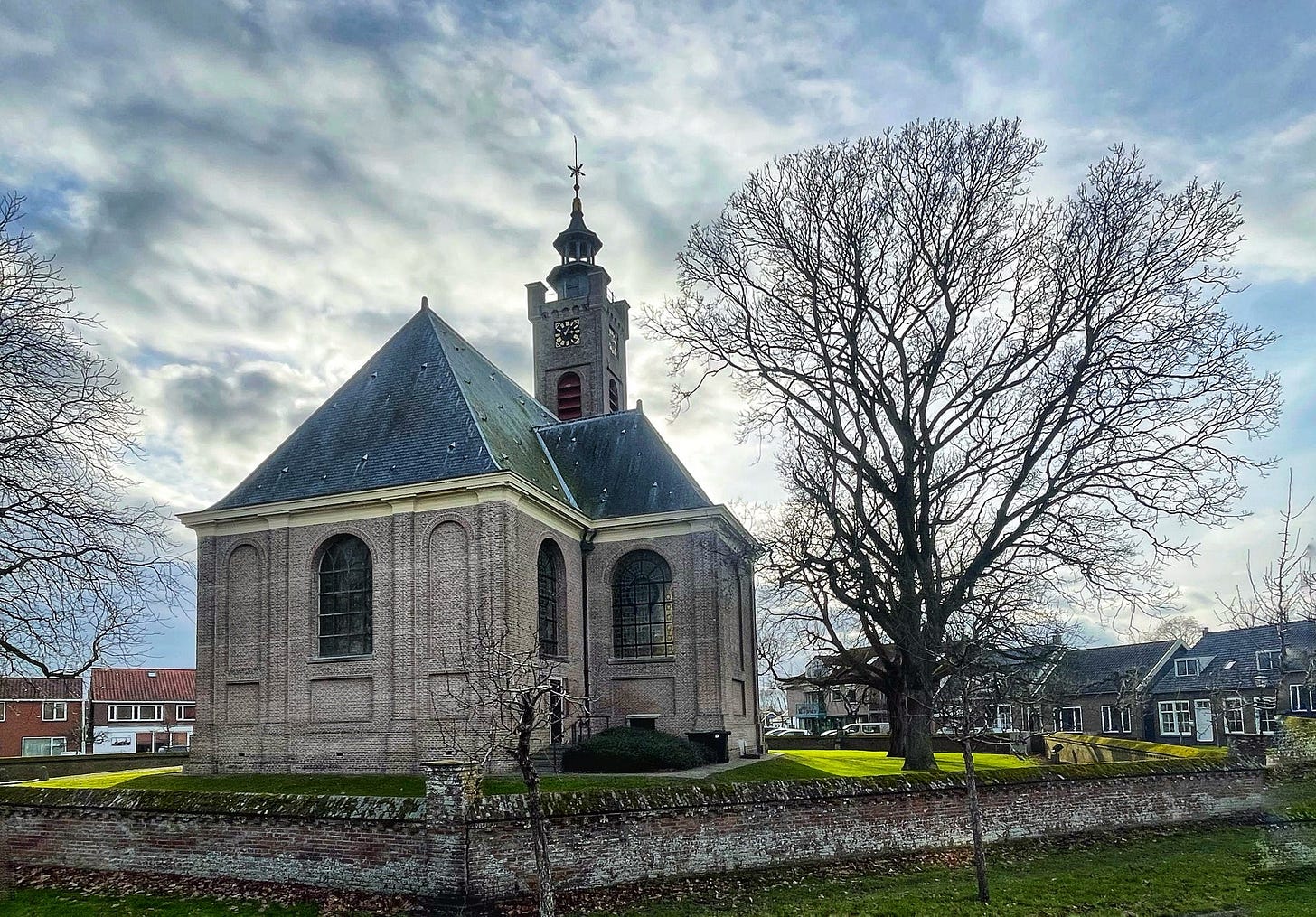
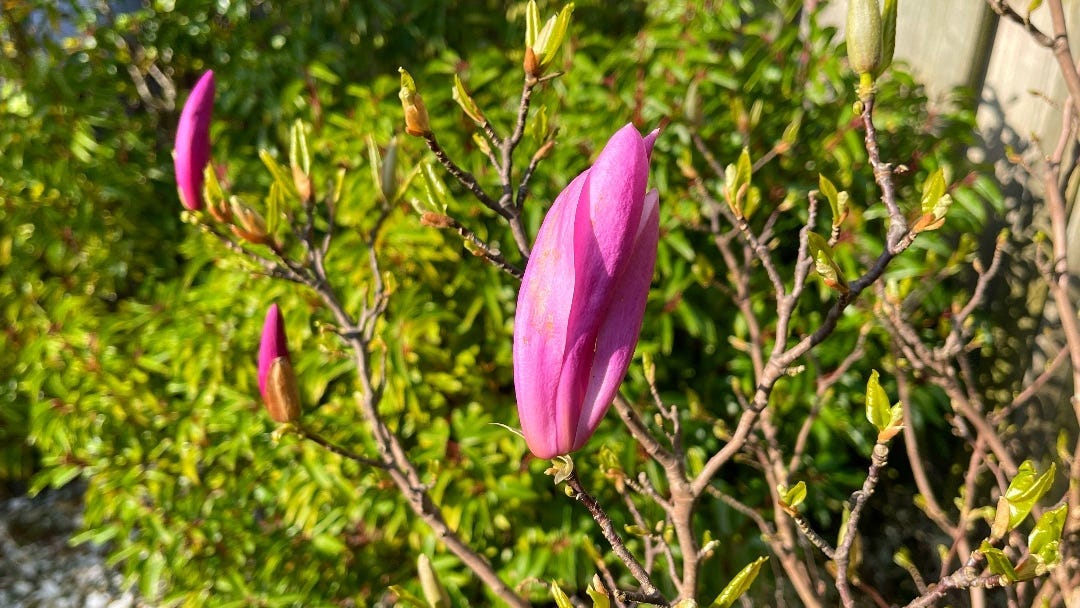
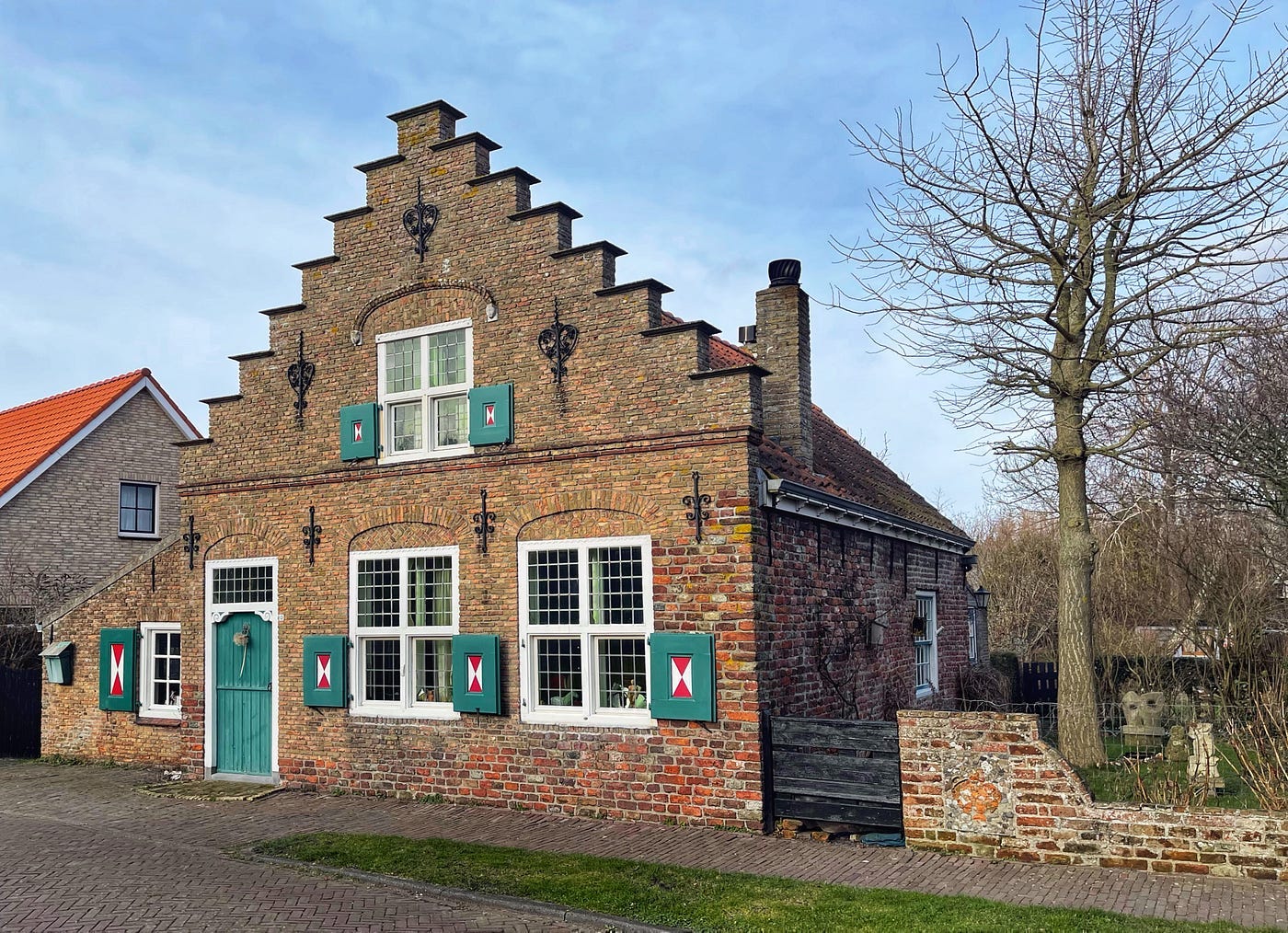
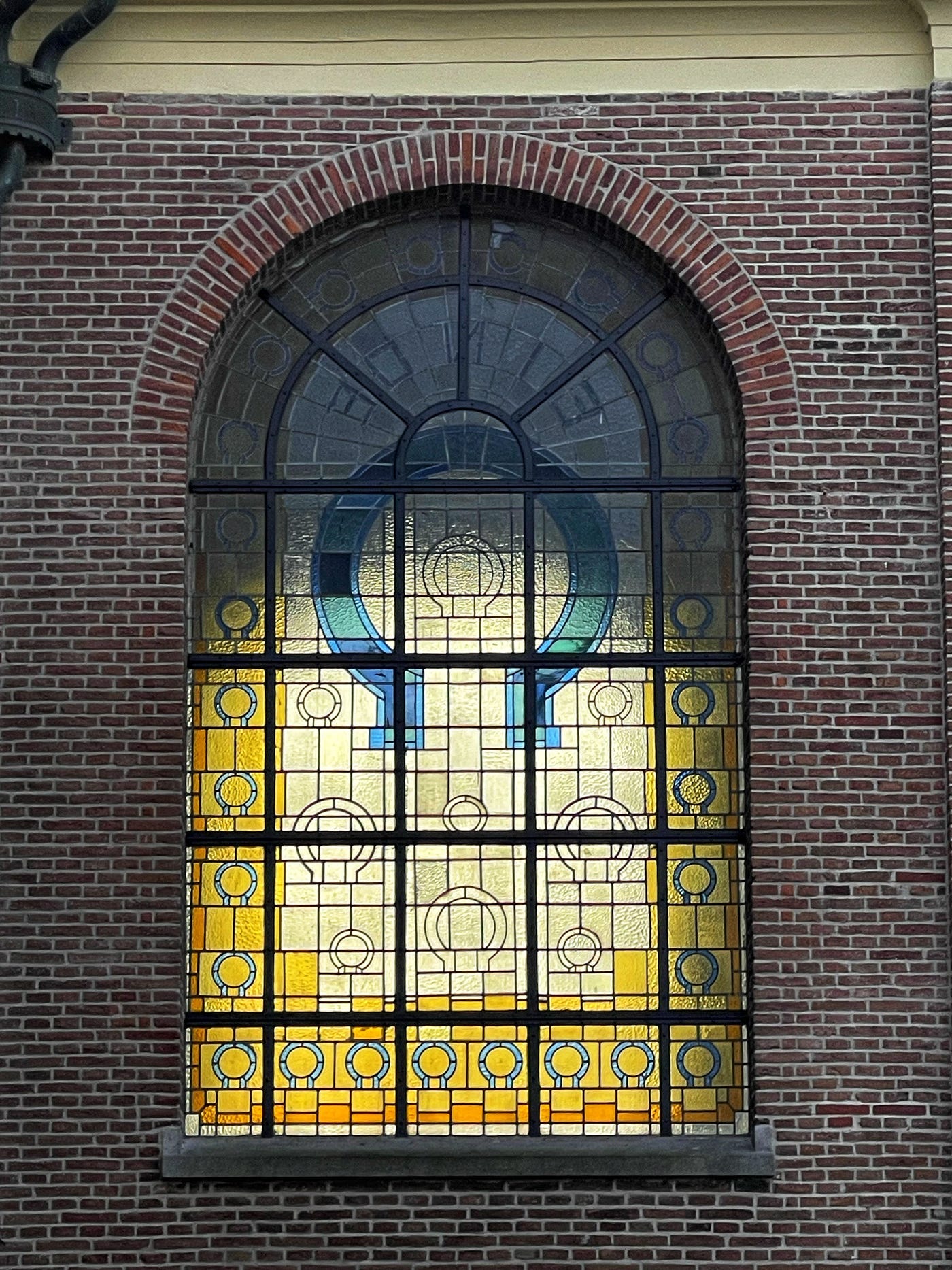
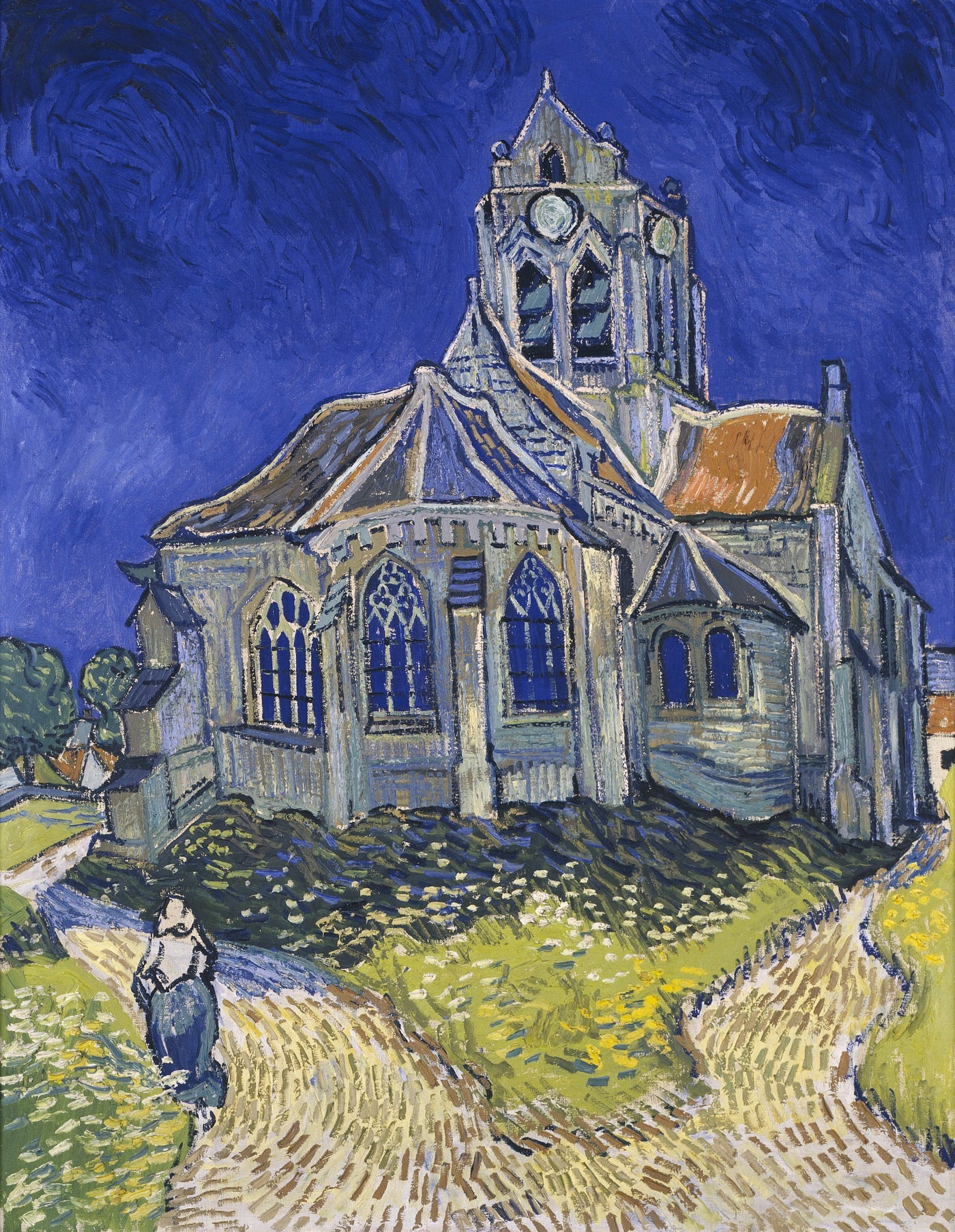
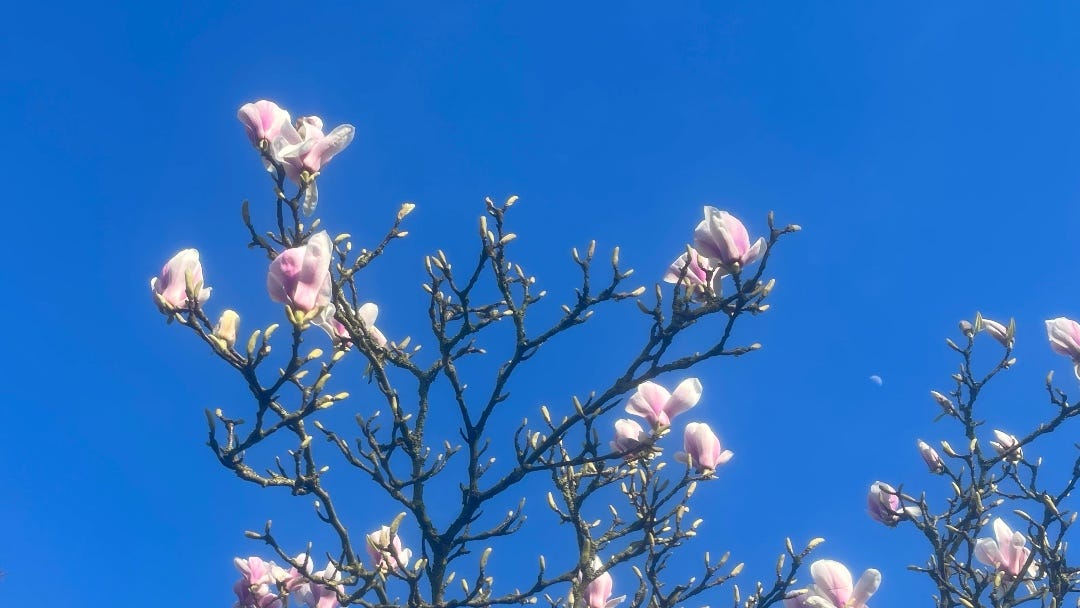

So many lines in this piece are treasures. You paint with words and take my breath away. Thank you!
Thank you for taking me/us on your walk with you. It’s always enjoyable when you share your life & appreciation of the world around you. Take care.